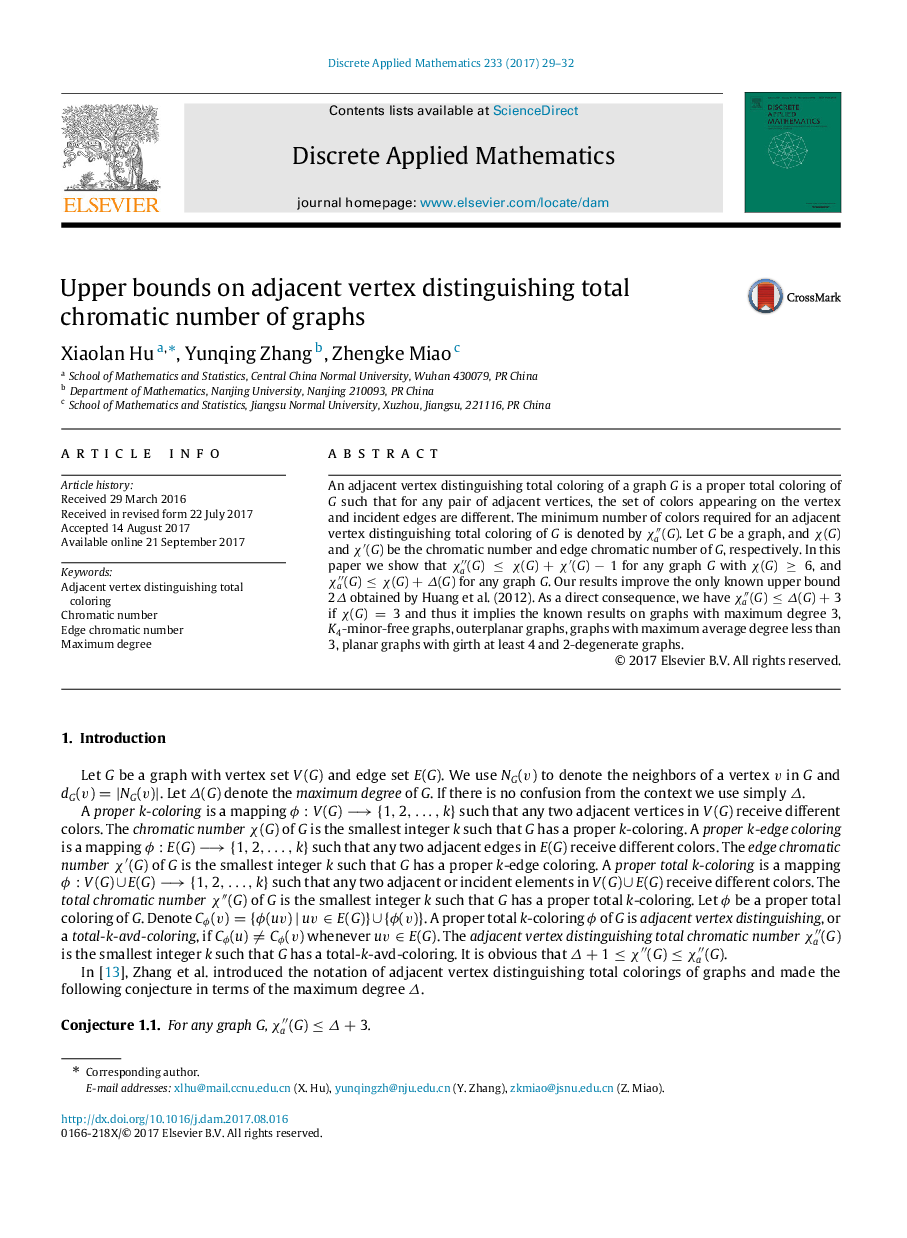| Article ID | Journal | Published Year | Pages | File Type |
|---|---|---|---|---|
| 4949464 | Discrete Applied Mathematics | 2017 | 4 Pages |
Abstract
An adjacent vertex distinguishing total coloring of a graph G is a proper total coloring of G such that for any pair of adjacent vertices, the set of colors appearing on the vertex and incident edges are different. The minimum number of colors required for an adjacent vertex distinguishing total coloring of G is denoted by Ïaâ²â²(G). Let G be a graph, and Ï(G) and Ïâ²(G) be the chromatic number and edge chromatic number of G, respectively. In this paper we show that Ïaâ²â²(G)â¤Ï(G)+Ïâ²(G)â1 for any graph G with Ï(G)â¥6, and Ïaâ²â²(G)â¤Ï(G)+Î(G) for any graph G. Our results improve the only known upper bound 2Î obtained by Huang et al. (2012). As a direct consequence, we have Ïaâ²â²(G)â¤Î(G)+3 if Ï(G)=3 and thus it implies the known results on graphs with maximum degree 3, K4-minor-free graphs, outerplanar graphs, graphs with maximum average degree less than 3, planar graphs with girth at least 4 and 2-degenerate graphs.
Keywords
Related Topics
Physical Sciences and Engineering
Computer Science
Computational Theory and Mathematics
Authors
Xiaolan Hu, Yunqing Zhang, Zhengke Miao,
